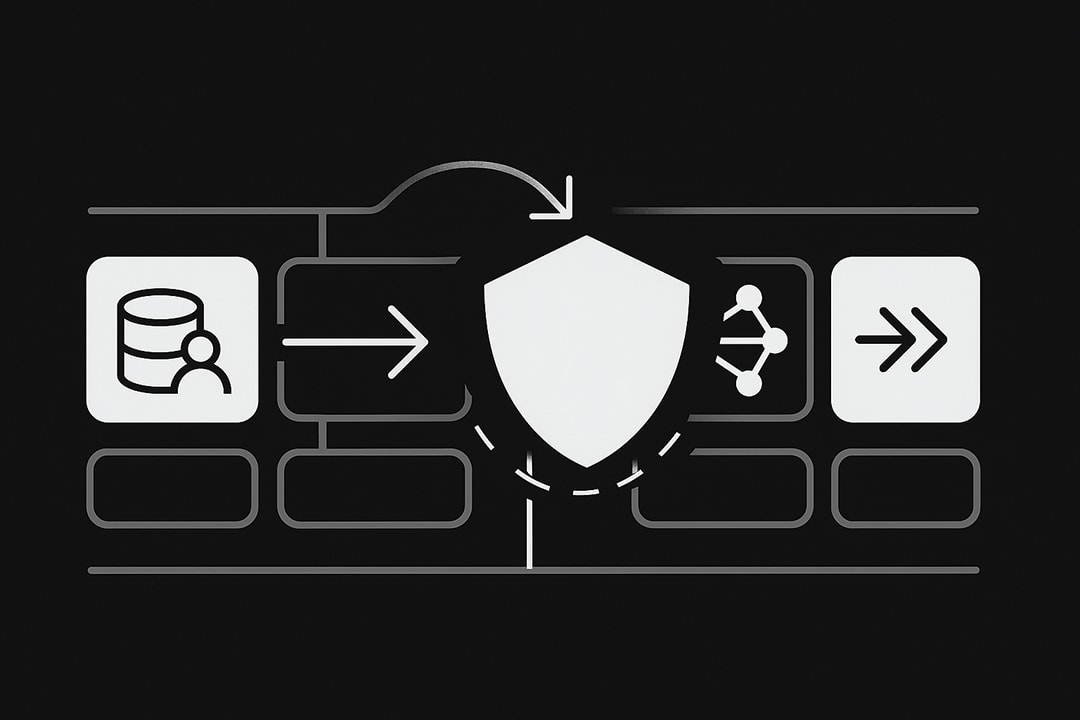As an IT leader, you can’t solve everything in-house
Cut through the noise and learn how sharp IT leaders turn vague ambitions into clear project scope, spot when it’s time to call in outside help, and lay the groundwork for real results, before the vendor sales pitches ever start.

Every IT leader knows that defining project requirements is a battleground. Not the kind that makes headlines, but the kind where budget, vision, and reality quietly collide behind closed doors. It is the stage where the difference between a well-oiled transformation and a year-long resource drain is decided.
Yet, even seasoned technology executives admit that scoping a project is rarely straightforward. This isn’t just about getting a checklist right; it’s about making sense of competing priorities, technical debts, and the constant hum of “what if we miss something critical.”
Why defining requirements is so difficult, even for the pros
Scoping an IT project is a balancing act, not a box-ticking exercise. The core challenge is that requirements aren’t just technical—they are political, psychological, and, at times, existential. Most organizations operate in a state of controlled chaos, where the loudest voice in the room can set the tone for what makes it into the requirements doc. Add to that the pressure to innovate without breaking things, and you have a recipe for analysis paralysis.
Here’s why it gets messy. Stakeholders want guarantees, but technology doesn’t deal in certainty. Business leaders push for agility and speed, while compliance and security teams demand rigor and proof.
The result is a tug-of-war between what’s ideal and what’s feasible. Requirements documents become battlegrounds for competing worldviews. In many teams, the fear of missing a requirement is so acute that “scope creep” becomes a self-fulfilling prophecy.
There’s also the problem of translation. Business goals sound inspiring in a boardroom but get lost in translation when mapped to system specs and workflows. No one wants to be the person who greenlit a solution that ends up as shelfware, but few are willing to challenge the status quo or question assumptions in the heat of a project kickoff.
The truth is, clear requirements demand more than technical skill. They require psychological safety, trust, and the courage to say, “We don’t know everything yet, but we’re willing to ask hard questions.” That’s the foundation for any IT project that doesn’t just limp over the finish line, but actually delivers value.
How do you decide between in-house and a vendor?
It’s tempting to assume the default answer is “we can handle this in-house,” especially when everyone’s wearing multiple hats and budgets are tight. But the cost of getting this call wrong can be staggering—lost months, security gaps, or a project that never quite delivers what was promised. Figuring out when to bring in a vendor isn’t about ego or tradition; it’s about precision and clarity.
The first step is a brutally honest audit of your current state. Look at your team’s bandwidth, expertise, and competing priorities. Are key people already maxed out or about to be pulled onto other urgent initiatives? Can the existing staff realistically take on another complex rollout without cutting corners or sacrificing ongoing operations? If the answer is anything less than a confident yes, it’s time to look outside.
Next, define what success looks like in practical, measurable terms. Don’t just say “we want better collaboration” or “improved security.” Spell out what done means: reduced ticket volume by 30 percent, improved uptime, or seamless integration with legacy systems. The more specific the target, the easier it is to measure vendor performance—and to spot red flags early.
Budget cannot be an afterthought. Before contacting a single vendor, establish realistic financial parameters. Understand the total cost of ownership, not just the sticker price. Factor in implementation, training, ongoing support, and the cost of potential downtime. This is often the step where internal projects quietly fail, because true costs aren’t recognized until they’re already sunk.
Finally, get your requirements and priorities locked before you start the vendor hunt. A clear, prioritized list of must-haves versus nice-to-haves will keep the search focused and prevent distractions from slick demos or persuasive sales tactics. The groundwork done here will pay dividends in every conversation, contract negotiation, and project milestone that follows.
Document the problems. Justify the solution.
If there is one thing that separates a project destined for executive applause from one fated to become a cautionary tale, it is the discipline of documenting the real problem and justifying the solution. This is not just a checkbox for procurement. It is the bedrock of every decision, every dollar spent, and every stakeholder expectation set—or shattered.
Too many projects start with a solution in search of a problem. Someone’s heard a buzzword, read a Gartner report, or seen a slick pitch, and suddenly the wheels are in motion. But without a concrete articulation of the pain points, teams end up chasing features instead of outcomes. The result: shelfware, wasted budgets, and that familiar, awkward silence in the post-mortem.
Start with brutal clarity. What, exactly, is not working? Is it a bottleneck that slows down every workflow, a costly compliance gap, or a user experience so bad it sends people scrambling for workarounds? Pull hard data. Look at ticket logs, shadow IT reports, downtime metrics, and lost productivity. Make sure the problem statement is grounded in evidence, not anecdotes.
Then, tie the solution directly to business value. If a new document management system is being considered, outline how it will reduce manual errors, speed up approvals, or cut support tickets by a measurable amount. Connect the dots between the pain and the payoff, and do it in language the business cares about: dollars, hours, and risk mitigation.
Justifying the solution is not about padding a slide deck. It is about earning the trust and investment of leadership—and making sure that when the project is complete, everyone agrees on what success actually looks like. In a world of constrained budgets and infinite demands, this step is where smart IT leaders draw the line between wishful thinking and real impact.
Set objectives, scope, and outcomes
Vendor selection is not a game of chance. It is the direct result of how well objectives, scope, and outcomes are defined at the outset. Get this right and the vendor conversations are focused, productive, and grounded in reality. Get it wrong and the process devolves into endless meetings, vague proposals, and solutions that fit someone’s sales pitch but not the organization’s needs.
The starting point is ruthless specificity. Objectives should not read like corporate vision statements. They need to be concrete, measurable, and prioritized. Instead of “improve document management,” state “reduce document retrieval times by 50 percent” or “achieve SOC 2 compliance within six months.” These are targets vendors can actually design to and be held accountable for.
Defining scope is about setting boundaries and expectations. Scope creep is not just an annoyance—it is a budget-killer and a morale drain. A clear scope outlines what is in and out, which systems must integrate, which geographies or business units are included, and where the finish line actually sits.
This clarity protects both the organization and the vendors from misunderstandings and costly change orders down the road.
Desired outcomes are where the rubber meets the road. This is more than ticking off feature lists. Outcomes should answer: What will be better, faster, or safer once the solution is in place? Tie these outcomes to business metrics—customer satisfaction scores, reduced error rates, or audit pass rates. If the outcome can’t be measured, it’s just noise.
Vendors respond best to RFPs with sharp edges and clear direction. When objectives, scope, and outcomes are nailed down, proposals become apples-to-apples comparisons, not a jumble of possibilities. This is the workup front that saves months of headaches later and ensures the selected partner is set up to deliver, not just promise.
RFPs are important, but why write them from scratch
RFPs are non-negotiable. It protects against misalignment, scope creep, and surprises that could derail your project six months down the line. The RFP is what forces clarity, levels the playing field for vendors, and ensures every stakeholder is working from the same blueprint. Skip it, and you are signing up for ambiguity, wasted budget, and a parade of solutions that might look good on paper but never quite fit the real-world need.
But let’s be honest, writing an RFP from scratch is a slog. It means wrangling input from every corner of the business, translating vague ambitions into concrete requirements, and making sure nothing critical gets left out. Every IT leader has stared at a blank page, wondering how to balance technical depth with clarity, or how to structure questions so responses are actually comparable.
Most RFPs end up as Frankenstein documents, stitched together from old versions, half-remembered templates, and last-minute edits that leave room for interpretation—and, inevitably, headaches.
The truth is, no one has time to reinvent the wheel every time a new project lands on the desk. The stakes are too high to rely on copy-paste jobs, but starting with a clean sheet is just as risky. That’s why having a proven, field-tested template is a game changer. It gives you a foundation that covers the essentials, helps you ask the right questions, and saves hours of frustration, so you can focus on the strategic decisions that actually move your project forward.
Download the IT RFP Template Now and set your next project up for success.
FAQ
1. What is the best way to define IT project requirements?
The best way is to gather input from all stakeholders, translate business needs into technical specifications, and prioritize must-haves over nice-to-haves. Use data and real-world pain points to guide your requirements, not just opinions or trends.
2. How do you know if you should build in-house or hire a vendor for an IT project?
Assess your team’s bandwidth, expertise, and ongoing commitments. If you lack specialized skills, need faster delivery, or require long-term support beyond internal capabilities, consider bringing in a vendor.
3. Why is documenting business problems and solutions so important in IT projects?
Clear documentation aligns everyone on the real issues, ties solutions to measurable business value, and helps justify budget and resource allocation. It also makes vendor proposals easier to compare and reduces the risk of project failure.
4. What are the most important elements to include when defining project scope and objectives?
Focus on specific, measurable objectives, clear scope boundaries, essential integrations, and desired business outcomes. Avoid vague goals—clarity at this stage will keep your project and vendor selection on track.
5. Is it necessary to use an RFP template, or can you write one from scratch?
While you can write an RFP from scratch, using a proven template saves time, reduces errors, and ensures you cover all critical areas. Templates help standardize the process so you get better, more comparable responses from vendors.





